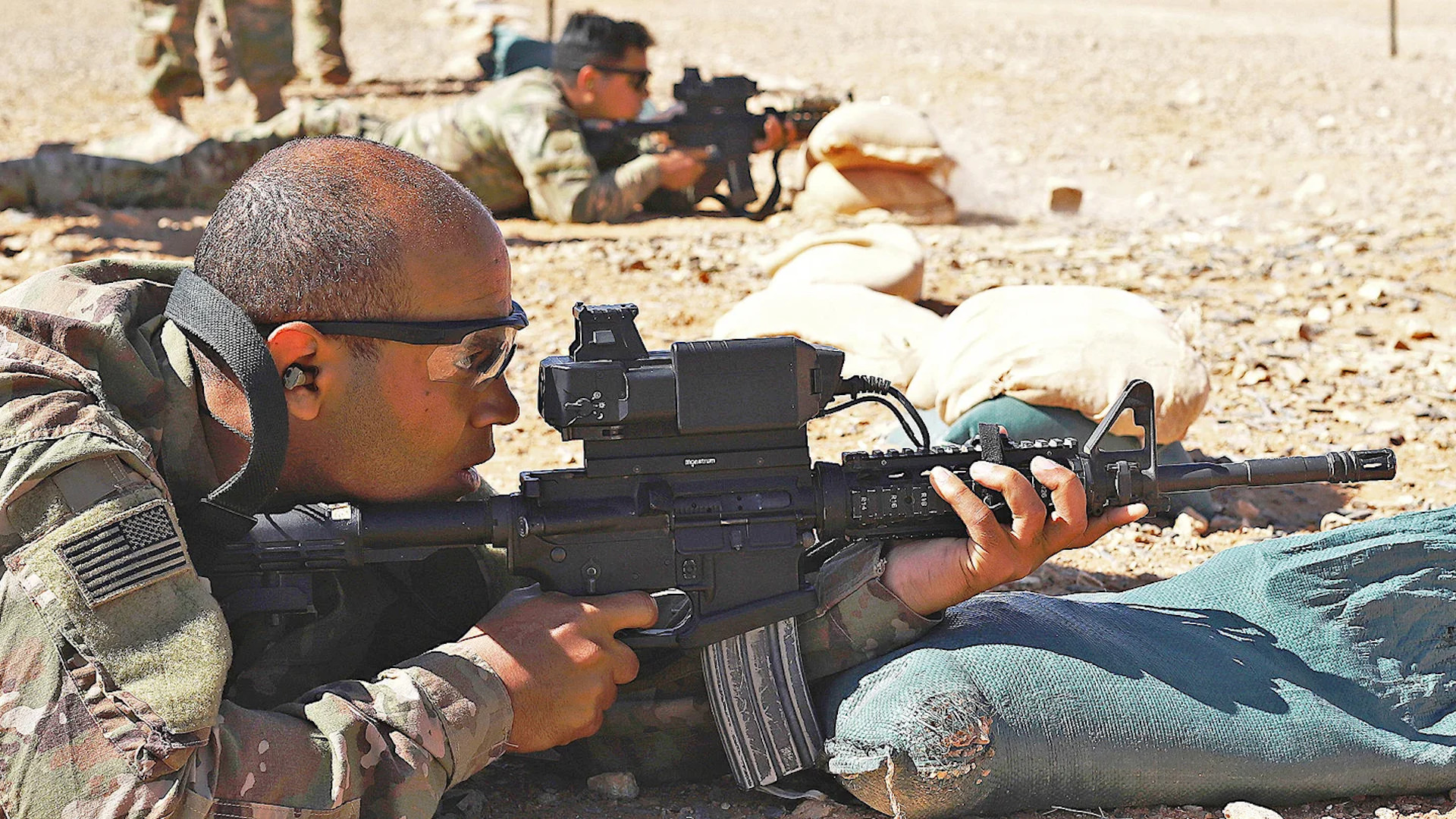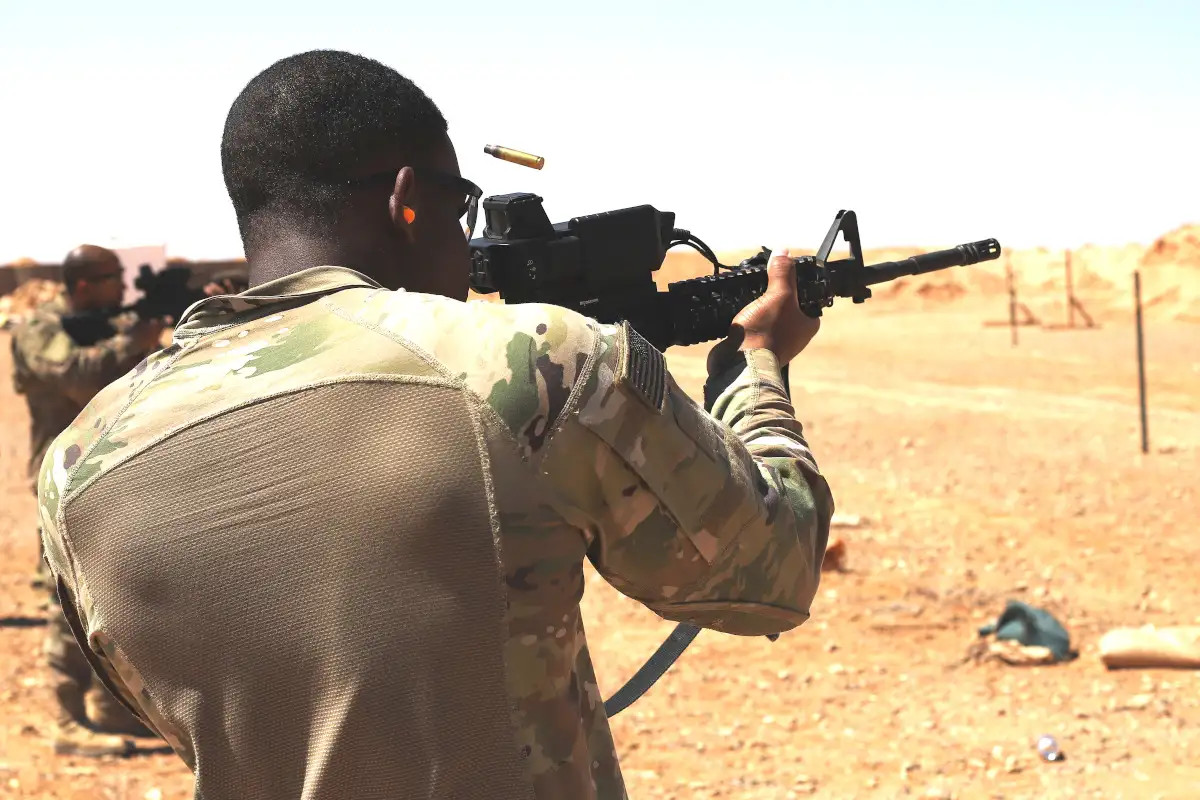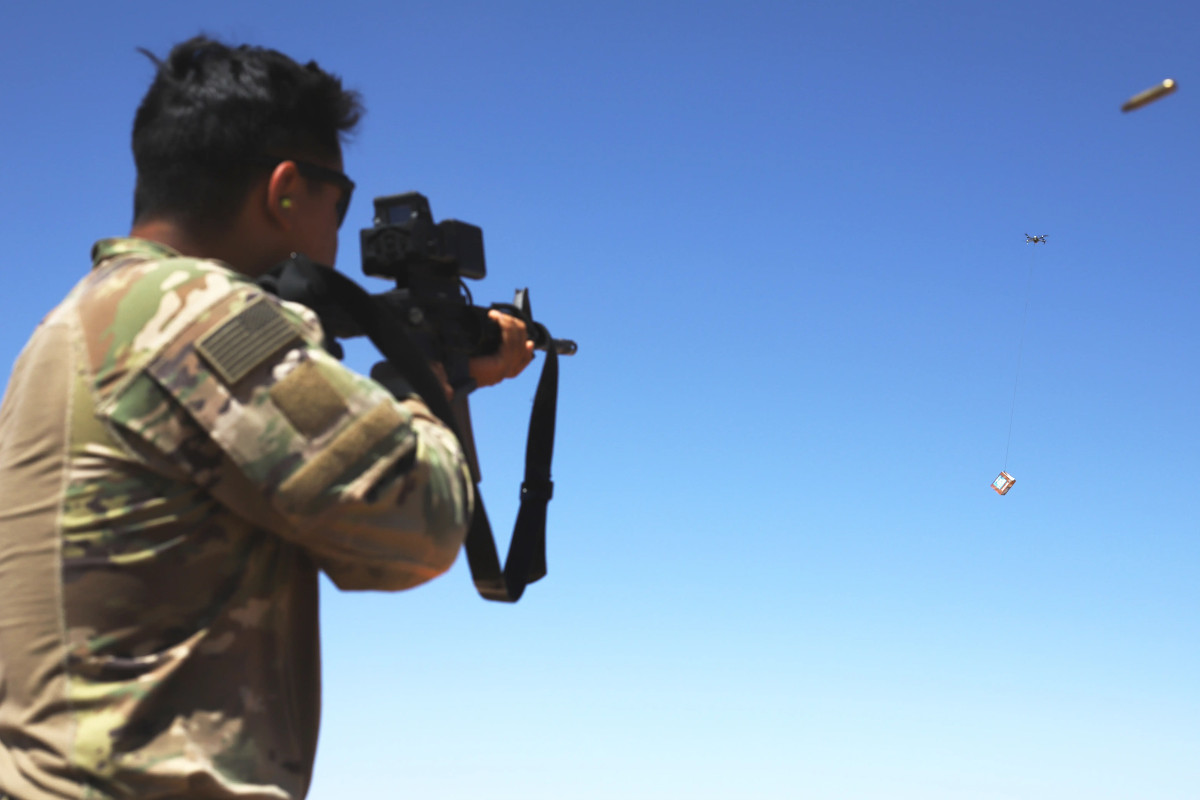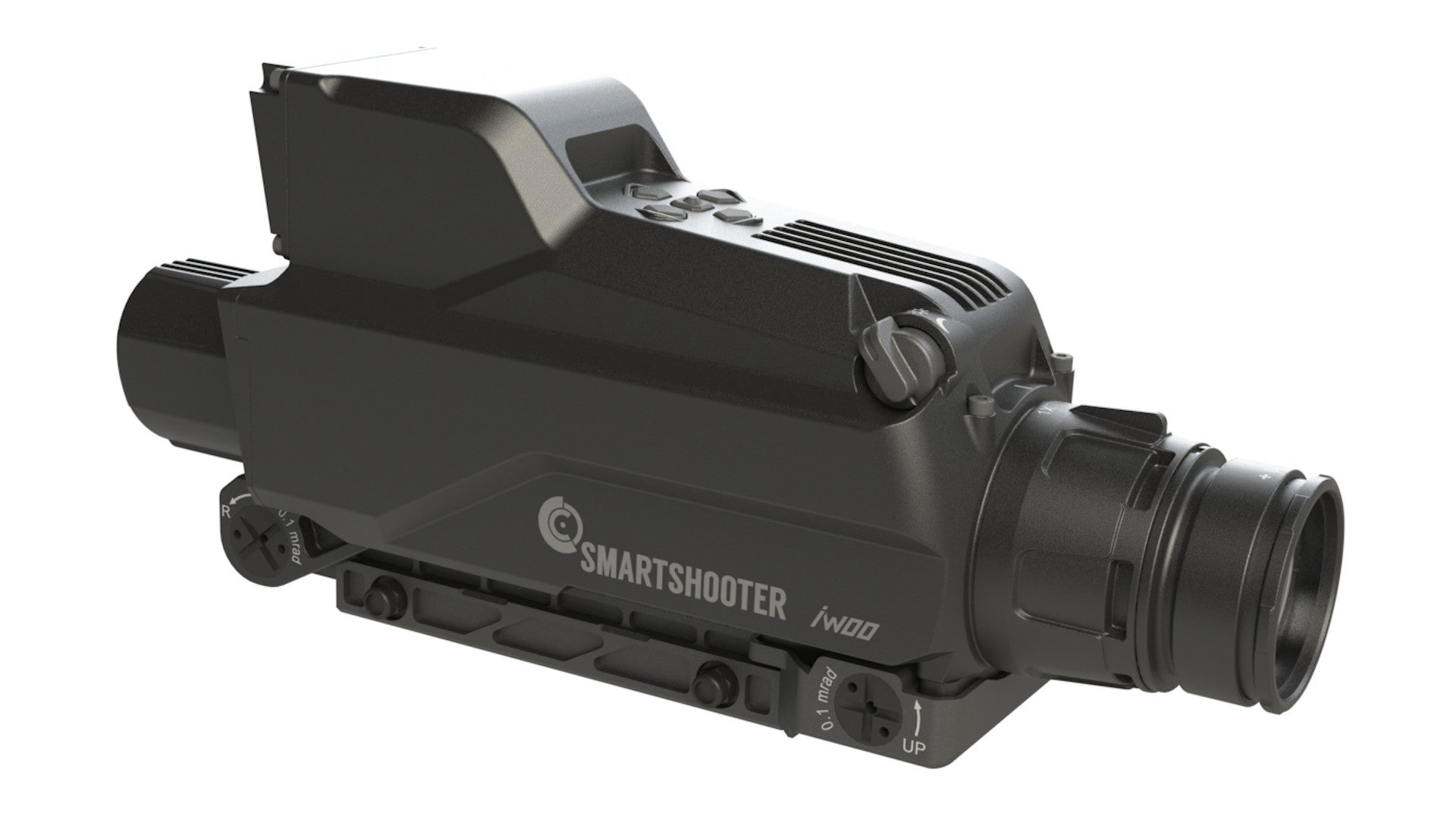The Pentagon has hired Israeli firm Smart Shooter to develop an improved “smart sight” for small arms for U.S. special operations forces that could also find its way into the hands of conventional units. The optic’s design is based in part on the company’s SMASH 2000 system, which helps shooters spot threats and then quickly calculates the optimal point of aim, even if the target, such as a small drone, is moving.
On March 24, 2021, Smart Shooter publicly unveiled the sighting system, which it has been working on for more than a year as part of the Individual Weapon Overmatch Optic (IWOO) program. The company said the Irregular Warfare Technical Support Directorate (IWTSD) had selected to develop the IWOO in February 2020 and that the system had passed a critical design review nine months later. The project is now moving into the prototype production stage.

“We are very pleased with the progress Smart Shooter has made with the IWOO design” Michael Trexler, the Special Operation Forces Combat Support Coordinator / Program Manager at IWTSD, said in a statement. “We look forward to conducting operational testing and evaluation using the dual-capabilities of IWOO prototypes in 2021 against ground targets at increased ranges and to take-down drones.”
The Combating Terrorism Technical Support Office (CTTSO) was officially renamed IWTSD in February. Established in 1999 under the Assistant Secretary of Defense for Special Operations/Low-Intensity Conflict, the office’s mission “is to identify and develop capabilities for DoD to conduct Irregular Warfare against all adversaries, including Great Power competitors and non-state actors, and to deliver those capabilities to DoD components and interagency partners through rapid research and development, advanced studies and technical innovation, and provision of support to U.S. military operations,” according to its website.
CTTSO, and now IWTSD, has overseen the rapid development of various capabilities over the years, including weapons, such as a 120mm mortar mounted on a computer-assisted turret for forward base defense, and other technologies. It’s not surprising that it has been working with Smart Shooter on an advanced derivative of their SMASH product line in the last year or so, either. In June 2020, pictures emerged of personnel assigned to Special Operations Joint Task Force-Operation Inherent Resolve (SOJTF-OIR), the top special operations command supporting the campaign against ISIS in Iraq and Syria, training with M4A1 carbines equipped with the SMASH 2000 system, which The War Zone
was first to report on. It’s not clear what existing or future small arms IWTSD might be envisioning attaching the IWOOs to, either for testing or eventual operational use.

However, like SMASH 2000, “the IWOO system automatically detects, highlights, and tracks potential targets – including drones – using a see-through display, which enhances the user situational awareness,” according to Smart Shooter’s press release. “Built-in fire control processing continuously calculates the optimal firing solution to provide the user with clear, discreet guidance, firing only with the best chance of neutralizing the target.”
The SMASH 2000 system also takes into account the movements of the shooter themselves, including involuntary motion due to fatigue or stress, something that should be carried over to the IWOO. The earlier system can also be configured in such a way that the trigger of the weapon it is attached to cannot fire until the crosshairs on the sight’s display line up with the designated point of impact, something Smart Shooter has said could help reduce the risk of accidentally shooting at innocent bystanders in the heat of the moment.

From what has been disclosed so far, the biggest difference between the IWOO and previous SMASH series sights is that the new system has variable magnification between 1x and 8x. The older models used non-magnifying optics.
The 8x magnification will allow shooters to make greater use of the IWOO’s other capabilities at extended ranges. This could also expand the existing ability of the system to be used in a secondary role as a surveillance tool. The feed from the built-in camera that SMASH 2000 uses to spot and track targets can be recorded, either in the form of video clips or still frames, for this purpose, as well as to assist with training, by helping troops to understand where they’re hitting and missing and why.

The ability to better utilize the IWOO’s capabilities against targets further away could be particularly useful when dealing with hostile small drones, which could approach or retreat from friendly positions quickly or use altitude to their advantage. Diminutive unmanned aircraft, including hobbyist types, such as quad and hexcopters that can be modified to carry small munitions with relative ease, are threats American troops on battlefields around the world face right now and will only become an increasingly serious problem for the U.S. military, broadly, as time goes on. These are issues you can read more about in these past pieces.
“These systems are inexpensive, easy to modify and weaponize, and easy to proliferate,” U.S. Marine Corps General Frank McKenzie, head of U.S. Central Command (CENTCOM), said in February, reiterating points he had already made on multiple occasions in the past. “They provide adversaries the operational ability to surveil and target U.S. and partner facilities while affording plausible deniability and a disproportionate return on the investment, all in our adversaries’ favor.”

So, IWOO could become an important additional component of work being down now across the U.S. military on various tiers of counter-drone capabilities. In addition, its core ability to help improve a shooter’s accuracy, even against moving targets at extended ranges, will almost certainly be of interest to American troops, in general. While historically U.S. special operations forces have been among the main recipients of capabilities developed through CTTSO/IWTSD, various systems, including the aforementioned turreted 120mm mortar, have also eventually made their way to conventional units, as well as other U.S. government agencies outside of the military.
The U.S. Army and U.S. Marine Corps are both already working on developing and fielding various new systems, including augmented reality-enabled visors and night vision optics with advanced sensor fusion capabilities, to improve the ability of individual soldiers and Marines to spot and engage threats. Active work across the services in computer-assisted targeting systems for small arms dates back at least to the 1990s. There have also other developments in the private sector, such as the smart sight that American firm TrackingPoint developed for its XS1 sniper rifle, which it unveiled in 2013. This is to say nothing of the experiments that the Defense Advanced Research Projects Agency (DARPA) conducted between 2008 and 2015 with precision-guided .50 caliber bullets as part of the Extreme Accuracy Tasked Ordnance (EXACTO) program.


Smart Shooter says that its goal now is to deliver “the first functional [IWOO] system next Fall.” Depending on how testing goes this year, these highly advanced sighting systems could head downrange with American special operations forces and other units soon after that.
Contact the author: joe@thedrive.com
